
Melanosiphon intestinalis
Twisted Sea Tubes, Dark Sea Tubes, Twisted Soda Straws
On-site interaction: 26 February 2022
French Beach, Juan de Fuca Strait, B.C., Canada.
Tide: 1.3 feet at 5:27pm PST (measured at Sheringham Point Tidal Station)
Conditions: Low overcast, light rain, wind variable 5 to 10 km/hr, sea rippled, humidity 93%, 5˚C.
Moon: Waning Crescent (19%, day 26); Previous Phase, Third Quarter, 23 Feb 2022 at 2:32pm PST: Next Phase, New Moon, 2 Mar 2022 at 9:34am PST.
Note: We interacted with this seaweed on site, and then due to the uncomfortable weather and lateness of the day, we compiled our notes the next morning at home.
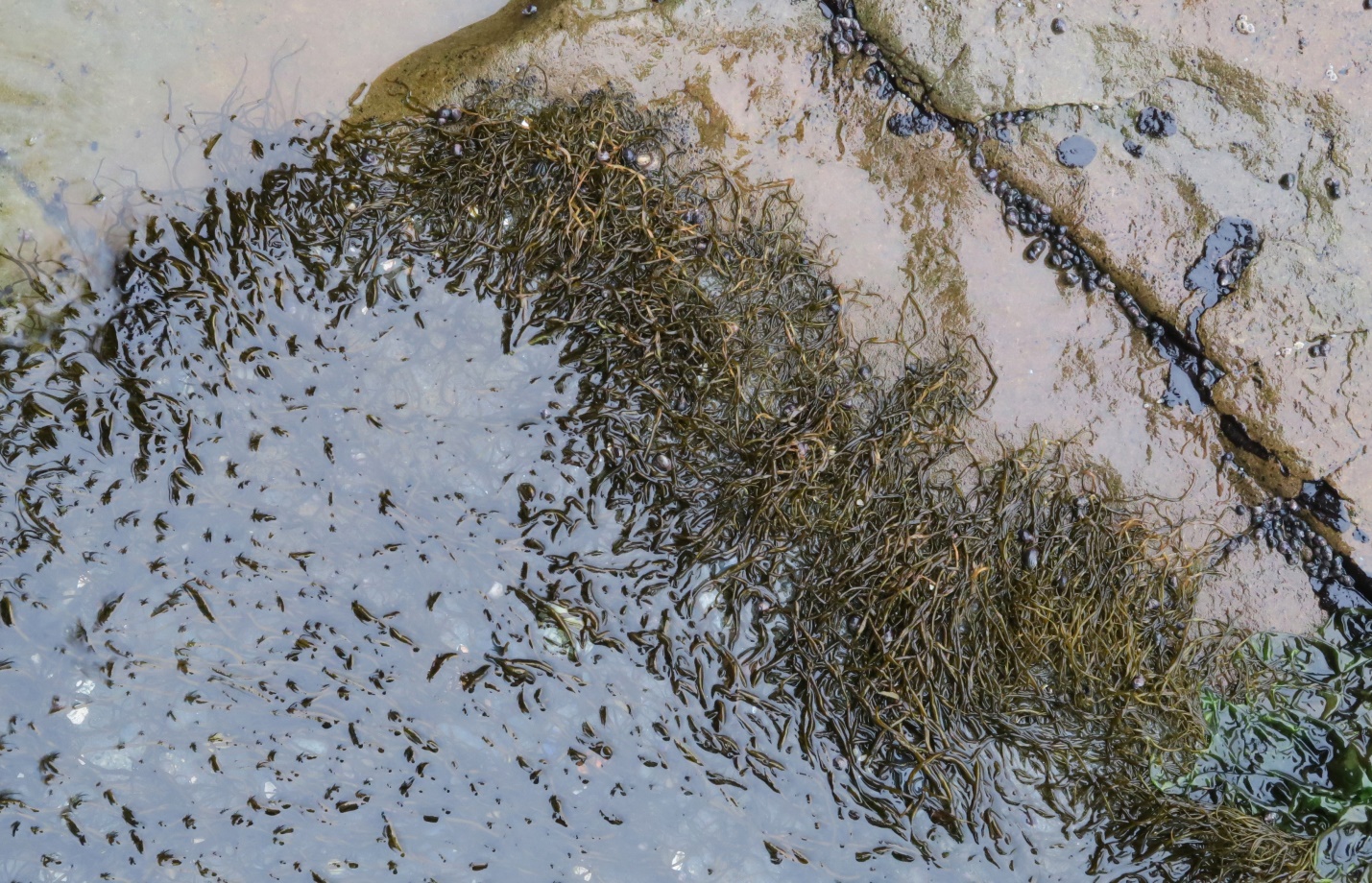
Figure 1: View of a tide pool depression in the sandstone shelf at French Beach; Melanosiphon intestinalis rims this pool profusely. Juan de Fuca Strait, B.C., Canada. February 26, 2022. Photo ID 27417 ©Seaweedwhisperings.com
Person 1:
Thriving here in the high intertidal, in and around shallow sandstone pools.
This seaweed has a few companions, mainly Black Pine, Neorhodomela larix, and Littorina snails.
Likes some freshwater runoff, but seems to be outcompeted by Ulva intestinalis if there is too much fresh water.
Whether submerged or not, the clusters of thalli tend to lie unidirectional.
Hollow tubular form seems to help maintain this orientation and effects buoyancy.
Looks like it might be slippery to the touch, but actually feels wiry, like the coarse hair of some humans.
Tubular form and greenish-brown coloration reminds me of some of the Japanese soba noodles I have enjoyed. The clumps of Melanosiphon look good enough to pick up and slurp !
[Note: emitting a slurping noise while eating is to pay a compliment in Japanese dining etiquette; in other parts of the world, slurping noises made in the same setting might be considered to be quite rude – totally different responses.]
Living so high up in the intertidal and subject to lots of freshwater runoff, Melanosiphon likely benefits from land-based nutrients more than most other seaweeds. Perhaps it feels a bit special in being able to enjoy that treat.
Simple and content in its existence?
Comfortable in its ways and ideals and not interested in change.
Some places I’ve seen Melanosiphon, it appears to be somewhat curled up, as if to hide and protect itself from unwanted attention.
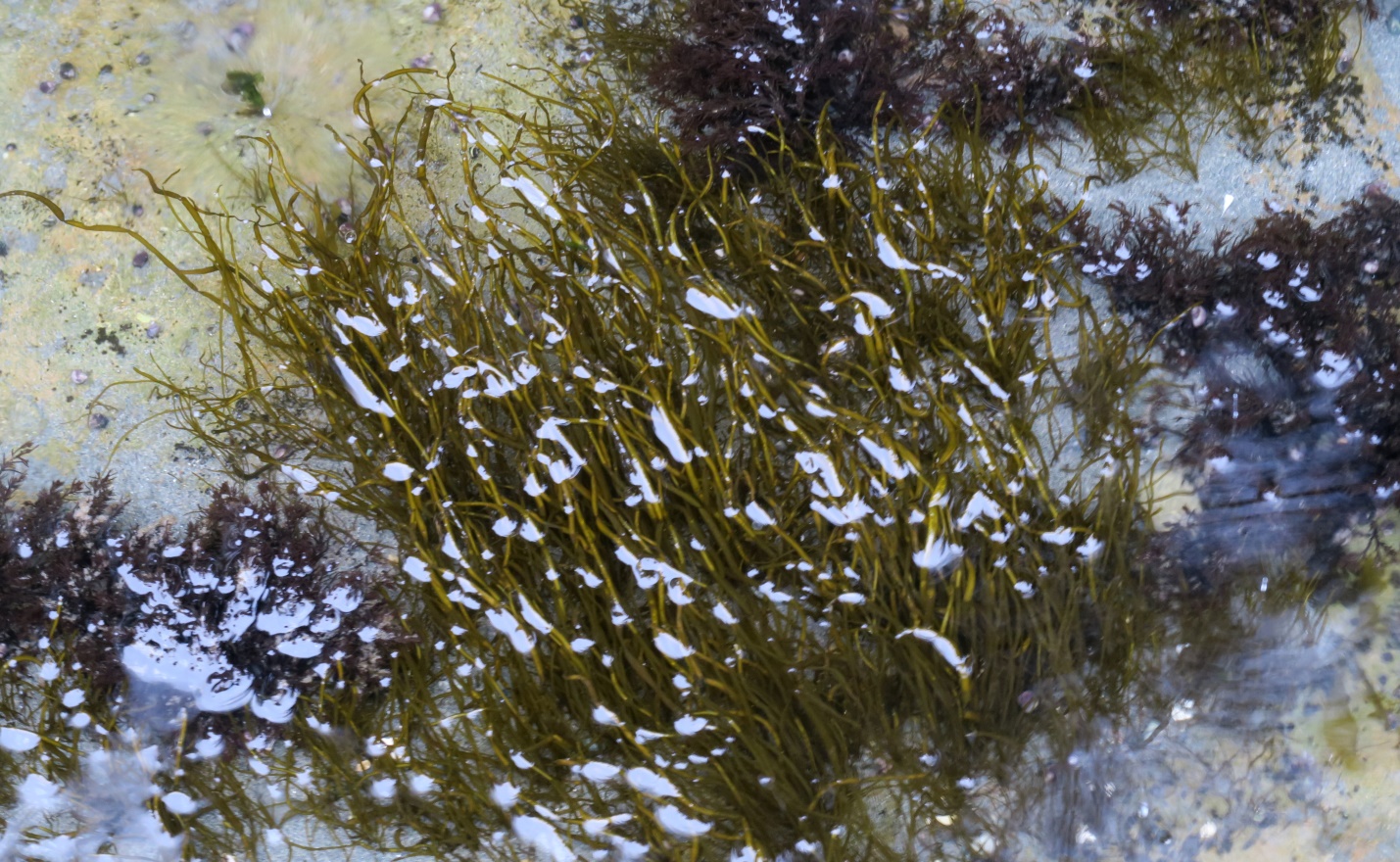
Figure 2: Twisted Sea-Tubes growing in a shallow tide pool. French Beach, Juan de Fuca Strait, B.C., Canada. February 26, 2022. Photo ID 27417 ©Seaweedwhisperings.com
Person 2:
Up in the high intertidal.
Rimming the shallow tide pools that are the first to be stranded by the receding tides.
Here you flourish. But only in late winter/early spring.
Strands of golden and darker brown narrow tubes twist and bend as they grow.
They half float, half sink.
They are not at all uniform or orderly but they have a rough pattern or similarity to them – as if when they are exposed to the ocean swell they all do respond, but the twists and bends of the individual tubes mean that the response is not the same for each tube, nor does it seem to be the same for that individual tube with each different wave.
They remind me of a rock star’s long hair – profuse, unkempt, disorderly, and stained here with sweat, shining there with reflection from the stage lights. In all the hair is a conspicuous statement about identity and an obvious ‘thumbs down’, even an affront to, convention and conformity.
There’s a wiry, rough, somewhat coarse feel to your twisted ‘tubes’, Melanosiphon. This is a bit of a surprise. Is it some association you have with ‘grit’? On this sandstone shelf, here at this particular location, that association is obvious as there must be constant erosion of sand here. But I wonder..., do you and grit or dust and dirt have a deeper connection? Are you comfortable with the dirt of life? Do you attract it or need it? Is it useful to you, or simply unimportant to feel concern for?
You lie prostrate on the rocks. You don’t bother to expend time or energy on being ‘upright’ in posture physically – in fact, that may be your weakness, the physical realm. So do you have strength not so much there but then in some other realm, one that is not so obvious or externally measured?
Your untidy and messy appearance, Melanosiphon, it feels like this could come about from having priorities elsewhere. For example, it could come about from a choice about time allocation. To “comb” your hair may be simply not worth the time investment to you, and then the longer you leave it uncombed, well, the larger the time investment would become in order to change that. The task becomes too large, and this gives even greater reason to continue to neglect or postpone it.
Certainly you have some unusual ‘pluck’ or grit. You can grow, up in the oft exposed high intertidal at a time of year when there is little light and the possibility of subzero air temperatures as well. So you can be ‘tough’ in these conditions, even thrive in them, but when the fuller light of spring and summer comes (and the heat of those seasons along with it), well, then you perish, dying off to nary a trace. So, yes, your tubes can be somewhat ‘dark’ colored, just as your botanical name suggests, but your tubes only grow in the relatively ‘dark’ seasons, too. If one didn’t venture out at these less popular seasons in the places where it is kind of tricky and uncomfortable to wander, well, one would never have the opportunity to ‘meet’ you. In the season that is typically ‘good’ for most other seaweeds, it is as if you’d been plucked from the rocks and tossed away.
However, in the fullness of YOUR season, your presence makes a statement! It’s almost saying, “Look at me! I’m different and quite content to be so!” I believe that Melanosiphon would like to have a bit more of some kind of ‘acknowledgment’ but, alas, it grows high up and far away from the richer high diversity areas of the intertidal zone. It has a few other algae neighbors, Black Pine and Green String Lettuce are the closest. Then also a bit of Turkish Washcloth and Nail Brush seaweed further away but it doesn’t feel like much interaction happens with any of them. So, with those of your kind, the other macroalgae, maybe you have little close company, but you are in a position to more frequently “meet with” life forms of other kinds. You may keep company with many different bird species (Northwestern Crows, Song Sparrows, Glaucous-winged Gulls, Black-bellied Plovers and Wandering Tattlers), and some mammals (river otters, mink and wolves) and I think you end up interacting with the debris from shoreline vascular plants quite often, too. You do seem to mingle with a varied and ‘different’ crowd!
Maybe you are a bit of an outsider or an outcast from the ‘prime’ or the ‘A-list’ of the algae world. You also are one of the first algae one can meet if approaching the sea from land. What impressions do you make with any such visitor? I don’t know if you really care about that much at all – in fact, I suspect you don’t.
I don’t think you have any desire to be an ambassador or a greeter, nor a scout or early defender. I think your habitat makes survival your chief concern; and the elements you are exposed to have taught you to conserve and retain your strengths mainly for your personal needs. In your ‘season’ you do look rather like you are thriving, Melanosiphon intestinalis, with your multitude of twisted tubes populating the rocks. But again, life isn’t easy here and priorities cannot be messed with; there is not much left over for non-essentials. Before long you will be gone, vanished completely and having no presence at all until your next season, the coming winter.
I think you have quite a bit of idle time, here where your opportunities to bask in the ocean waves are the least of all the seaweeds or where you can lazily sip at the tide pools’ edge. In your idle time what do you do?
I wonder if your thoughts and imagination wander, playing at the edges and along the boundaries of ‘other worlds’? Maybe there is richness there…, but you do not display that. Perhaps it is a private enjoyment? Or have you dared to tell, to show or to enact these ideas and fantasies only to be met with misunderstanding and even disdain?
Can your world, your imagination, seem ‘twisted and dark’ or simply somewhat unpleasant or ugly to others? Is that why you refrain from telling of it? Or do you simply lack the energy to expend in sharing such narratives?
Do the twists of your tubes give you interesting vantage points that shape your experience? They must, indeed.
All your twists just seem to mean that you don’t reflect light very well but you certainly do know light, you absorb it well, even where there is very little available.
What you do with your light is just not easily recognized or understood by others.
My thoughts return to the rock music star with his electric guitar and messy long hair – the music of his genre would not even be classified as ‘music’ by lovers of other music genres. Indeed some music historians say that rock music had a polarizing influence on lifestyles, fashion, attitudes and language. So, maybe, Melanosiphon you do not make any extra effort at being an ambassador of any kind, but by virtue of being who you are, you often show a different way of being, a different set of tastes, and sometimes you may even lead by example becoming a kind of accidental role model.
A physical symptom:
Clearly connected with this seaweed interaction, I experienced incontinence of urine, upon sneezing, a few times. This was a surprise but when examined I realized it felt there was some reminder of the primitive or simply the lack in ‘commonly agreed upon’ civilized behavior quality that I was to grasp as relates to this seaweed. Perhaps Melanosiphon has neglected to learn such bodily functions, or could there simply be in them no shame and therefore no motivation? Perhaps the ‘twists’ in the tubes, need a force such as a sneeze for them to become unblocked? Whatever the reasoning, it seems that your ‘tubes’ (siphons) are not of the intestinal system, as the intestinalis species name might indicate, but of the urinary system. This somehow fits better with what we know of your coloration, too, yellow brown to darkish brown.
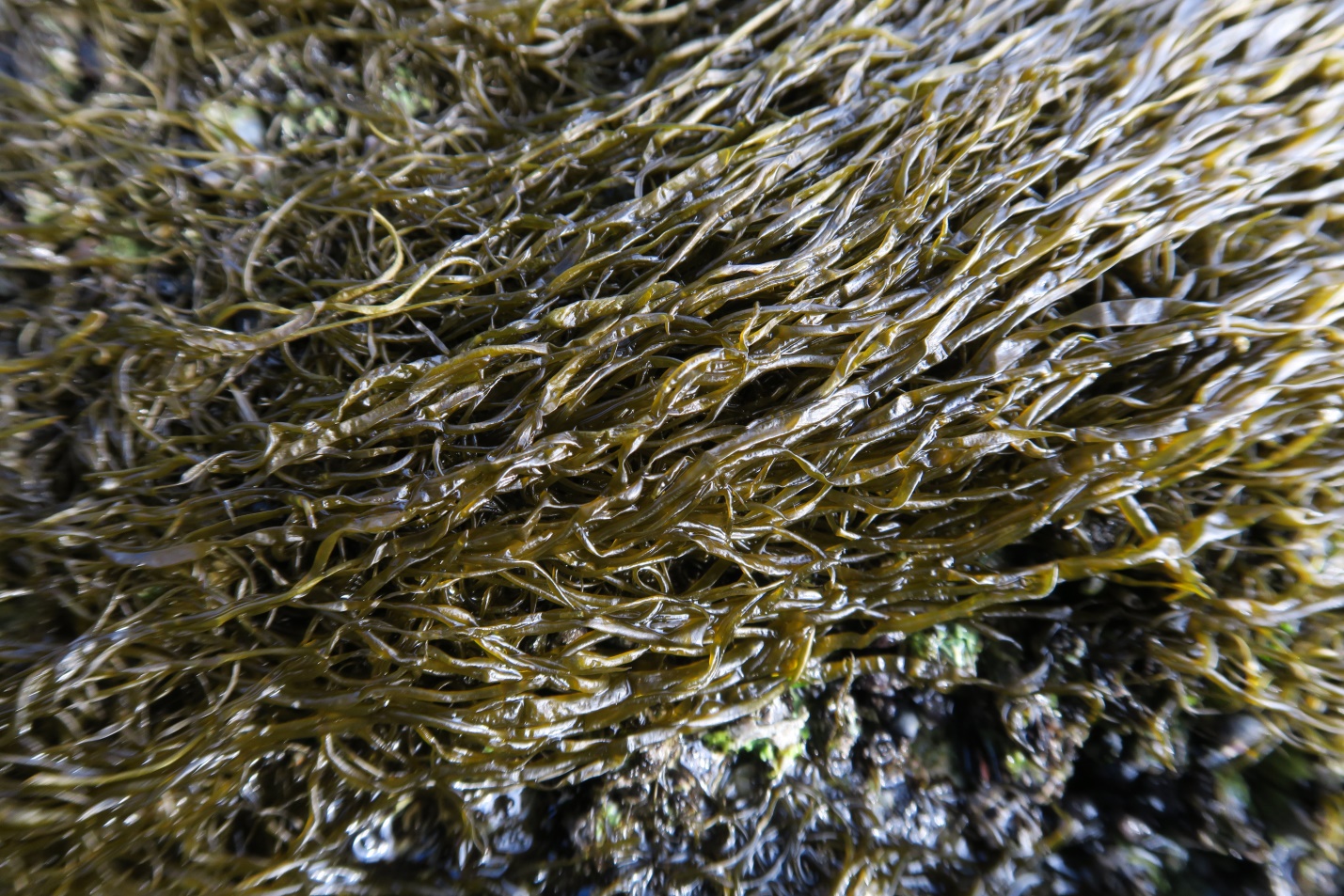
Figure 3: A closer look at the ‘twisted’ tubes, flattened as they are now mature. Gonzales Bay, Juan de Fuca Strait, B.C., Canada. February 7, 2021. Photo ID 27419 ©Seaweedwhisperings.com
Discussion:
There is a feeling with this seaweed that they can be going around and around with the same thoughts…, perhaps sipping from the same ‘pool’ only. They’re content because they’re entertained in their own world, and as long as they can stay in their own world, all is good. If forced into something too uncomfortable they first try to hide, and if they continue to be pressured in this way, well, then they’ll fall to pieces and disappear.
The twists are irregular in this seaweed, so nothing approximating a regular pattern or the neat geometry of a spiral. There appears to be a lack of deliberate organization, but order and development seems to happen more by chance or by a trust in their inner direction – they “march to a different drummer” for certain.
Like the cultural differences in one loudly ‘slurping’ their noodles, Melanosiphon seems to have a different feel for what is valued and what is not. This is another way of understanding the ‘twist’ that informs this energy.
Person 1 likened this seaweed to ‘coarse hair’ and if we add the twisted characteristic to this metaphor, well, twisted and coarse hair does not shine, it does not reflect light well like long smooth strands do. When you are near Melanosiphon intestinalis where it is thriving in its habit, you can notice that it doesn’t have pretty colors or iridescence or ways of showing off its inner light and it does not beam out lightness and joy. Some references later consulted likened this seaweed to a dead patch of flattened grass – nothing very attractive at all. And so it seems that Twisted Sea Tubes are ‘into’ themselves, partly of necessity (survival issues) and partly because they’re on the fringes of ‘normal’ – like an outcast from their kind. As such, the ‘light’ they do present is not one of the common values of society. It could almost be thought of as a light belonging to a different wave length – visible only in another spectrum.
To those working in the ‘visible spectrum’ it looks as if Melanosiphon individuals don’t ‘reflect’ much of anything, and we feel we can say from our experience is that what does emanate is a genuine ‘twist’ of the light. The twist can be interpreted in many ways and this can be part of the ‘dislike’ others might feel. We noticed ourselves that when in the presence of Melanosiphon their impact is not even noticed much at all, but then if you linger longer you can find this shifting. It can feel offensive or repulsive at the worst, and also simply highly annoying and confusing at best. We noted also that it also seems that if you remain in their presence too long, you can begin to feel your own energy being ‘siphoned’ away – and this seems to be another part of the Melanosiphon challenge in relationships. Perhaps that is why it has no close neighbors and few friendly associates.
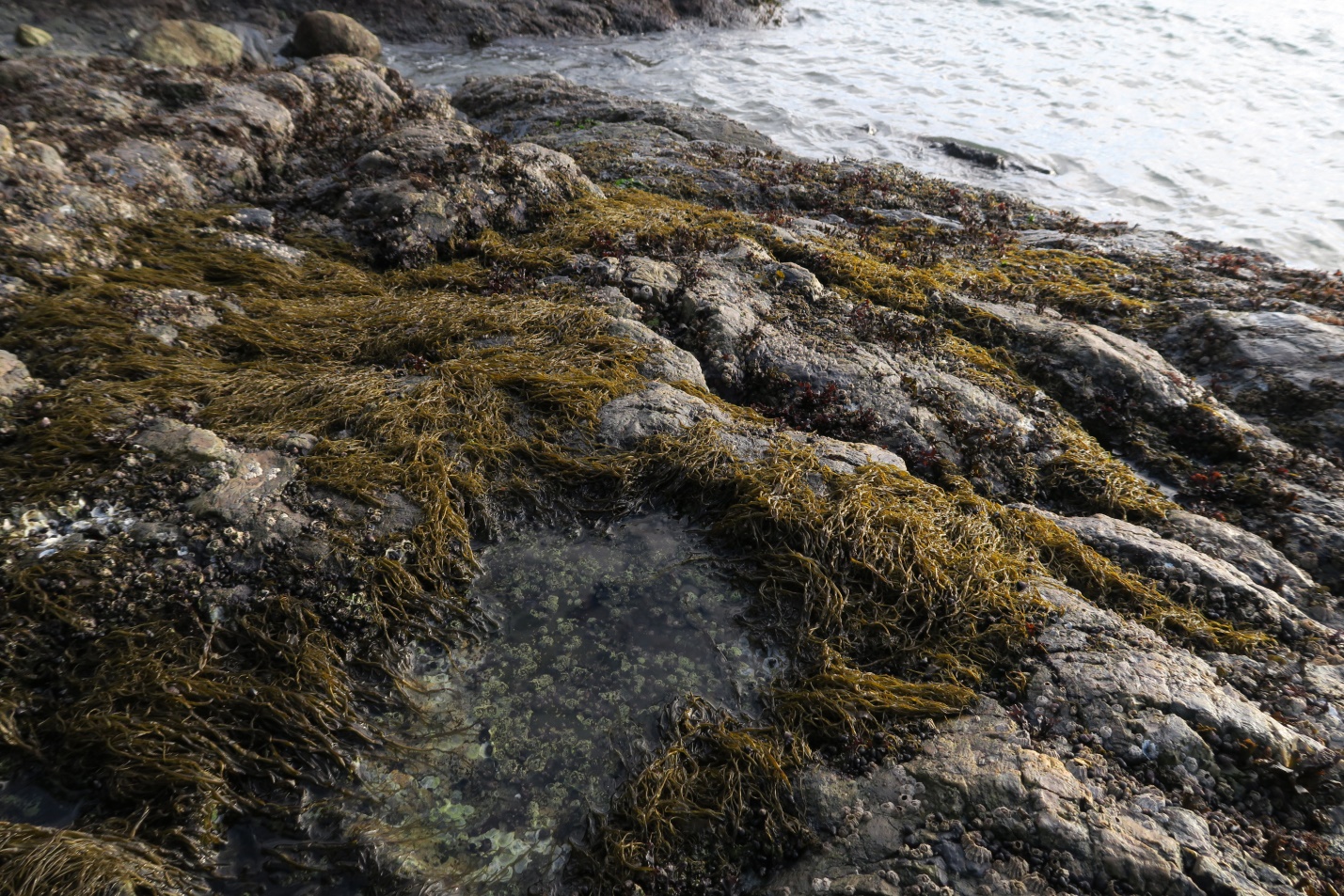
Figure 4: Strands of Melanosiphon intestinalis rim the tide pools high in the intertidal zone. Gonzales Bay, Juan de Fuca Strait, B.C., Canada. February 7, 2021. Photo ID 27420 ©Seaweedwhisperings.com
Biology & Natural History Information:
Description:
This brown alga grows as a cluster of unbranched, partially hollow tubes, lacking constrictions. Originating from a disc-shaped holdfast, the tubes range in color from light to dark brown and are often twisted. Length of the thalli can grow to 35 cm tall. This is an annual species that colonizes bare rock early, growing in late winter and early spring.
Habitat:
This seaweed is described as a “weedy” species and it often forms mats, sometimes quite sizeable. It can be found often near the lips of high intertidal tide pools and also on mid to low intertidal rock. It prefers protected to semi-exposed habitats.
North Pacific Distribution:
The range of this species in the eastern North Pacific extends from the Bering Sea and Aleutian Islands, Alaska, south to San Mateo County, California. It occurs also on the coasts of Korea, and Japan
Remarks:
This is the type species of the genus Melanosiphon.
Former name(s): Myelophycus intestinalis De A.Saunders 1901
Classification:
Phylum: Ochrophyta
Class: Phaeophyceae
Order: Ectocarpales
Family: Scytosiphonaceae
Genus: Melanosiphon
Species: Melanosiphon intestinalis (De A.Saunders) M.J.Wynne 1969
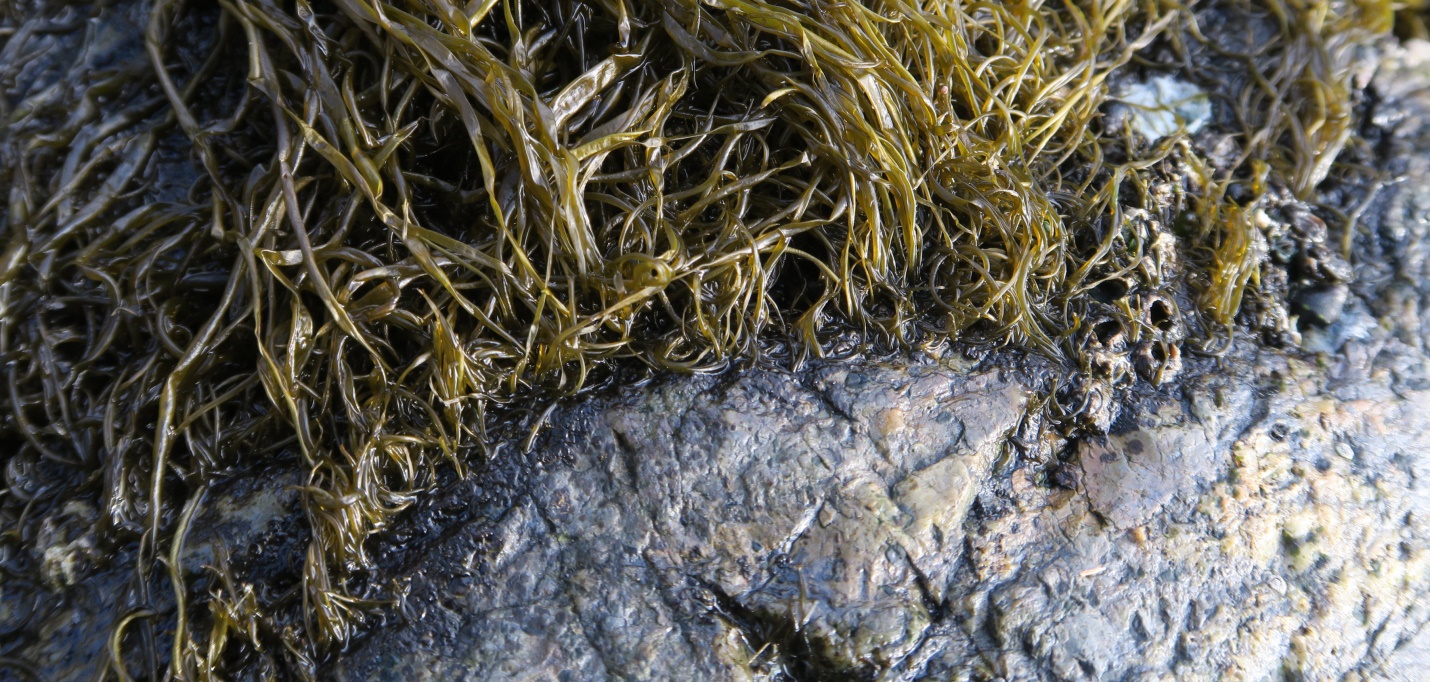
Figure 5: The holdfast area and tubular thalli of Melanosiphon intestinalis. Gonzales Bay, Juan de Fuca Strait, B.C., Canada. February 7, 2021. Photo ID 27421 ©Seaweedwhisperings.com
![]()